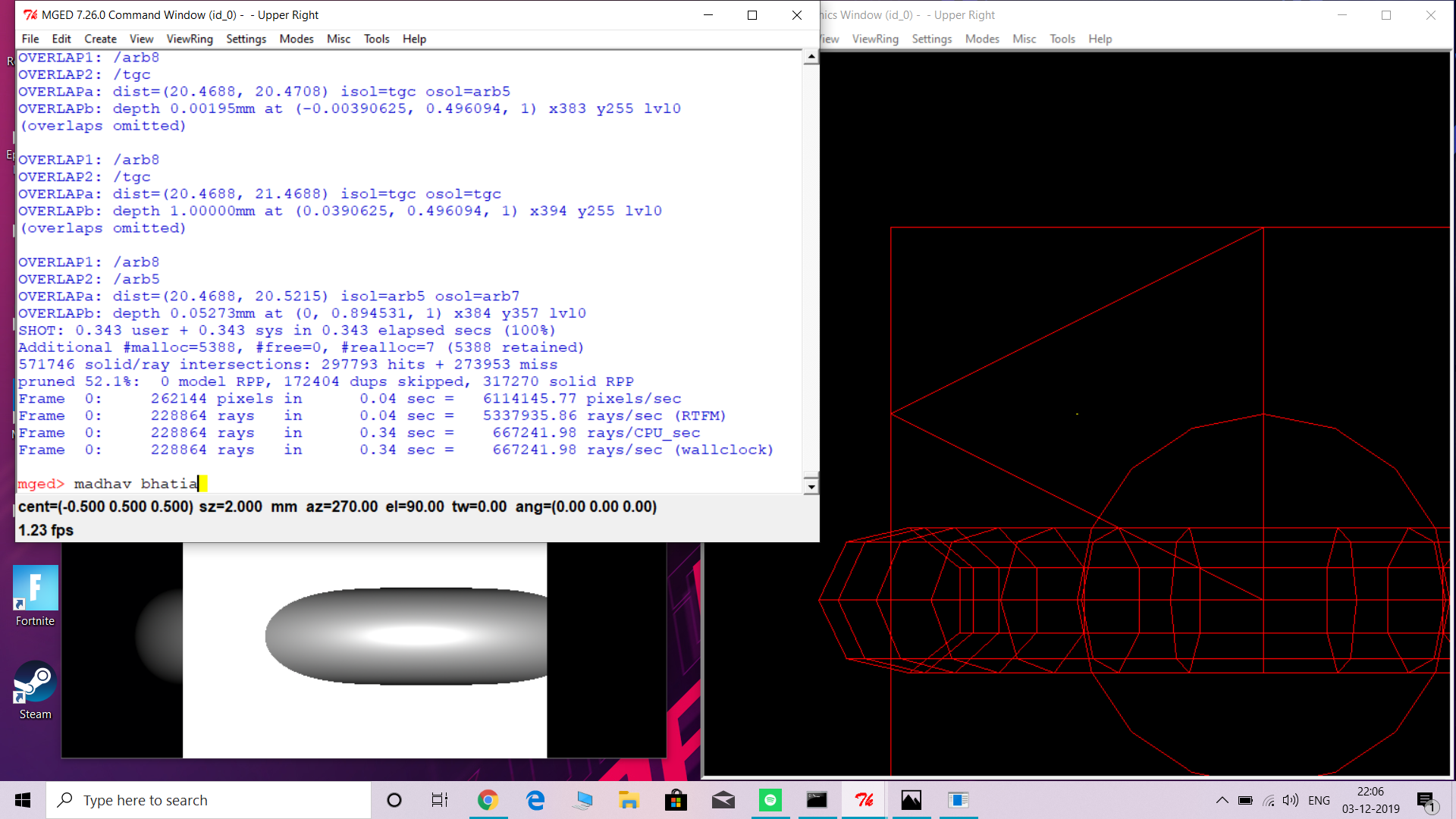
"The CAD industry is 'big' to say the least - about $6 billion last year, if I recall correctly," said Morrison. He began working at ARL as a summer student in 1998.
#BRL CAD SCREENSHOT SOFTWARE#
Sean Morrison, from SLAD's Software Development Branch has worked on BRL-CAD for more than a decade. "So BRL-CAD is at the heart of SLAD's contributions to Army studies, live-fire test and evaluation, a host of major acquisition decisions, and even data tools that operational forces use in weaponeering, which is their pre-mission selecting of an optimum munition load to carry with them into an upcoming fight," continued Tanenbaum.Ĭ. "This ray-tracing, or shotlining, is central to SLAD's MUVES model, which then walks threats along the trajectories, assesses how far they'd penetrate and what they'd hit, and concludes what would break, and thus which system capabilities would be lost and which retained," said Tanenbaum. Tanenbaum explains the importance of BRL-CAD to executing his directorate's mission. And you need to be able to very quickly process lots of queries of the form, 'what would a penetrator encounter if it proceeded along such-and-such a trajectory?' Those are BRL-CAD's two central capabilities: to represent system geometry and to query the daylights out of it." "In order to simulate in software the accurate details of a weapon's effects on a target vehicle, you need a thorough and precise characterization of that vehicle's geometry, materials, componentry, et cetera. Essentially every major vehicle and weapon system that the Army has acquired, or seriously considered acquiring, over the past quarter century has been analyzed by SLAD with BRL-CAD in conjunction with our other modeling tools," said Tanenbaum.

"BRL-CAD is used in many types of analysis, and most particularly for ballistic vulnerability and lethality. Paul Tanenbaum, director of the Survivability/Lethality Analysis Directorate, used BRL-CAD early in his career when he was an analyst at the bench and then later when he served on the team developing and maintaining it. It has been used for nearly three decades in support of modeling, simulation and engineering analyses of military assets and their environments including the design and analysis of vehicles, mechanical parts and architecture.ĭr. military with unprecedented scientific computational capabilities.Īs its name suggests, BRL-CAD - a computer-aided design (CAD) system - was developed before ARL existed. And ever since the development of the ENIAC, ARL has provided the U.S. The development of this computer was driven by the Army's need to speed calculation of firing tables. Indeed, nearly 70 years ago, BRL unveiled the Electronic Numerical Integrator and Computer (ENIAC), the world's first operational, digital computer. Army Research Laboratory (ARL).īut during the decades of providing support to the nation, BRL quickly became involved in the move toward modern computing. That remained the case until 1992, when BRL was disestablished and its mission, personnel and facilities were incorporated into the newly created U.S. 4, 2012) - Since 1938, the Ballistic Research Laboratory (BRL) at Aberdeen Proving Ground, Md., was the center for the United States Army's research efforts in ballistics and vulnerability/lethality analysis.

Army) VIEW ORIGINALĪBERDEEN PROVING GROUND, Md. Army) VIEW ORIGINAL 5 / 5 Show Caption + Hide Caption – (Photo Credit: U.S. Army) VIEW ORIGINAL 4 / 5 Show Caption + Hide Caption – (Photo Credit: U.S. Army) VIEW ORIGINAL 3 / 5 Show Caption + Hide Caption – (Photo Credit: U.S. Army) VIEW ORIGINAL 2 / 5 Show Caption + Hide Caption – (Photo Credit: U.S. 1 / 5 Show Caption + Hide Caption – (Photo Credit: U.S.


 0 kommentar(er)
0 kommentar(er)
